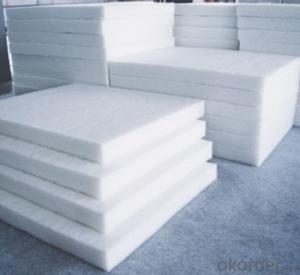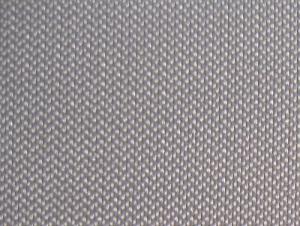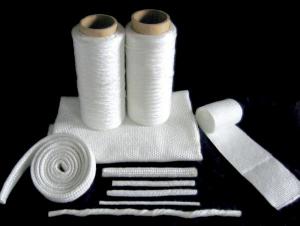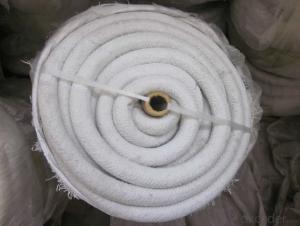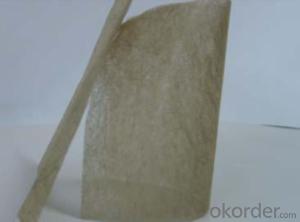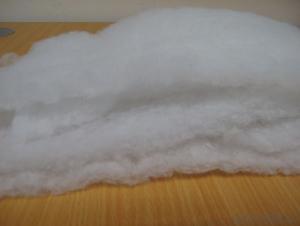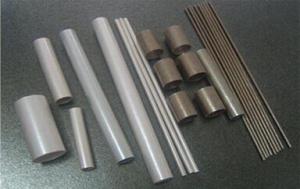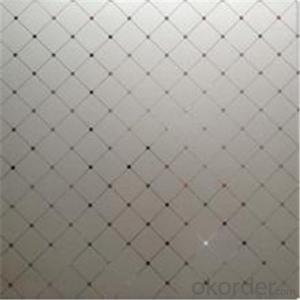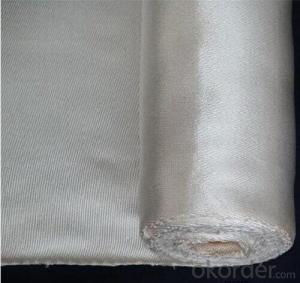High temperature ceramic fiber refractory fabric for heat insulation
- Loading Port:
- Shanghai
- Payment Terms:
- TT OR LC
- Min Order Qty:
- 1 m.t.
- Supply Capability:
- 111 m.t./month
OKorder Service Pledge
OKorder Financial Service
You Might Also Like
Specifications
1.Ceramic fiber cloth
2.1260C
3.thickness:1-5mm
4.reasonable price
High temperature ceramic fiber refractory fabric for heat insulation
Specifications:
Temperature:450C-1260C
Thickness:1.5mm-6.0mm
Width:500mm-1200mm
Density:500kg+/-30kg/m
Reinforcing materials: glass fiber wire, stainless steel wire
1. Products Details:
Hitex Ceramic Fiber Cloth is a woven fabric made from our high quality ceramic fiber woven yarn. The cloth is reinforced with fiberglass filament, or optional Inconel/alloy steel wire reinforcement. It is featured with heat insulation and high temperature protective materials in all kind of thermal installations and heat-conducting systems, widely used in welding, foundry works, aluminum and steel mills, boiler insulation and seal, shipyards, refineries, power plants and chemical plants.
2. Product Advantages:
1.Resistance to high temperature and chemical erosion
2.High mechanical strength
3.Low thermal conductivity
4.Low thermal storage
5.Resistance to heat shock
6.Easy installation
3. Technical Data:
Item | Ceramic Fiber Cloth | |
Classification Temperature | 1260C | 1260C |
Work Temperature | 450C | 1000C |
Basic Material | Fiberglass Reinforced | Stainless Steel Reinforced |
Theoretical Density ( kg/ m3) | 500±15 | |
Moisture Content (%) | ≤2 | |
Warp Density | 48~60 Piece/10cm | |
Weft Density | 21~30 Piece/10cm | |
Organic Content (%) | ≤15 | |
Specification (mm) | L:30,000mm / W:1,000mm / T:2~3mm | |
Packing | Plastic bag inside, woven bag outside | |
- Q:How do glass fiber textiles perform in terms of weight?
- Glass fiber textiles are renowned for their lightweight characteristics. Despite being crafted from glass, which is commonly associated with heaviness and fragility, glass fiber textiles possess remarkable lightness. This can be attributed to the thinness and delicacy of the fibers themselves, which results in a remarkable strength-to-weight ratio. Consequently, glass fiber textiles are an optimal selection for scenarios that necessitate weight reduction, such as the aerospace and automotive industries. Moreover, the lightweight nature of glass fiber textiles simplifies their handling and manipulation, thereby diminishing the overall expenses incurred in terms of labor and transportation.
- Q:How do glass fiber textiles perform in terms of breathability?
- Breathability is generally not a strong suit for glass fiber textiles, also known as fiberglass textiles. Unlike natural fibers such as cotton or linen, glass fibers lack the porous structure needed for air to easily pass through. They are tightly woven, which restricts airflow and can lead to discomfort for those who prefer more breathable fabrics. However, it's worth noting that the breathability of glass fiber textiles can vary depending on the manufacturing and finishing processes. Some manufacturers may incorporate techniques like micro-perforations or specific weaving patterns to improve breathability. Therefore, it is recommended to review product specifications or consult with manufacturers to determine the breathability of specific glass fiber textiles.
- Q:How do glass fiber textiles resist static electricity?
- Glass fiber textiles resist static electricity due to their non-conductive nature. The structure and composition of glass fibers prevent the accumulation and flow of electric charges, thereby minimizing the generation of static electricity.
- Q:Can glass fiber textiles be used in medical bandages or dressings?
- Yes, glass fiber textiles can be used in medical bandages or dressings. Glass fiber textiles are lightweight, strong, and have high tensile strength, making them ideal for use in medical applications. They can be woven or knitted into fabrics with different textures and porosity, allowing for breathability and moisture management. Glass fiber textiles can also be coated with antimicrobial agents to prevent infection and promote healing. Additionally, their non-absorbent properties make them suitable for use in situations where excessive moisture needs to be managed, such as in wound care. However, it is important to note that glass fibers can be irritating to the skin, so it is vital to use them in combination with other materials or coatings to ensure patient comfort and safety.
- Q:Can glass fiber textiles be used in luggage and bags?
- Yes, glass fiber textiles can be used in luggage and bags. Glass fiber textiles are known for their strength, durability, and resistance to wear and tear, making them suitable for applications where high performance is required. Using glass fiber textiles in luggage and bags can provide added strength and protection to the contents inside, making them a desirable choice for manufacturers and consumers.
- Q:How do glass fiber textiles affect the drape of fabrics?
- Glass fiber textiles can significantly alter the drape of fabrics. Due to their stiffness and lack of flexibility, glass fiber textiles tend to make fabrics stiffer and less fluid, reducing their natural flow and drape.
- Q:Are glass fiber textiles resistant to ultraviolet (UV) degradation?
- Yes, glass fiber textiles are generally resistant to ultraviolet (UV) degradation. The composition of glass fibers makes them inherently resistant to the harmful effects of UV radiation, making them a suitable choice for applications where prolonged exposure to sunlight is expected.
- Q:How do glass fiber textiles affect the breathability of masks or respirators?
- Glass fiber textiles can significantly impact the breathability of masks or respirators. Due to their dense and rigid structure, glass fiber textiles restrict the flow of air through the material, making it more difficult for the wearer to breathe. This reduced breathability can lead to discomfort, increased breathing effort, and potential overheating. As a result, masks or respirators made with glass fiber textiles may not be as effective in providing adequate ventilation and air exchange, compromising their overall functionality.
- Q:What are the disadvantages of using glass fiber textiles?
- There are several disadvantages associated with the use of glass fiber textiles. Firstly, glass fiber textiles are generally more expensive compared to other types of textile materials. The production process is complex and requires specialized equipment, which increases the overall cost. This can be a major drawback for industries or individuals with limited budgets. Secondly, glass fiber textiles can be quite brittle and prone to breakage. While they are known for their strength and durability, they can be easily damaged by external forces or impact. This limits their use in applications where flexibility or resistance to bending is crucial. Another disadvantage is the potential health risks associated with glass fibers. During the manufacturing process, tiny glass particles can become airborne and inhaled, posing a risk to workers' respiratory systems. Prolonged exposure to glass fibers can lead to lung diseases such as fibrosis or even lung cancer. Therefore, proper safety precautions, such as wearing protective masks, must be taken when working with glass fiber textiles. Additionally, glass fiber textiles have poor resistance to high temperatures. They tend to lose their structural integrity and strength when exposed to extreme heat. This limits their usability in applications where heat resistance is critical, such as in the aerospace or automotive industries. Lastly, glass fiber textiles have a relatively low resistance to UV radiation. Over time, prolonged exposure to sunlight can cause the fibers to degrade, leading to discoloration and loss of strength. This can be a significant disadvantage in applications where the textiles are exposed to outdoor conditions or direct sunlight. In conclusion, while glass fiber textiles offer many advantages such as strength and durability, they also have several disadvantages including high cost, brittleness, potential health risks, poor heat resistance, and low resistance to UV radiation. These factors must be considered when deciding to use glass fiber textiles in various applications.
- Q:Can glass fiber textiles be used in insulation pipes?
- Yes, glass fiber textiles can be used in insulation pipes. Glass fiber textiles are commonly used as insulation material due to their excellent thermal insulation properties and resistance to high temperatures. They can effectively reduce heat transfer and prevent energy loss in pipes, making them suitable for insulation applications in various industries.
1. Manufacturer Overview |
|
|---|---|
| Location | |
| Year Established | |
| Annual Output Value | |
| Main Markets | |
| Company Certifications | |
2. Manufacturer Certificates |
|
|---|---|
| a) Certification Name | |
| Range | |
| Reference | |
| Validity Period | |
3. Manufacturer Capability |
|
|---|---|
| a)Trade Capacity | |
| Nearest Port | |
| Export Percentage | |
| No.of Employees in Trade Department | |
| Language Spoken: | |
| b)Factory Information | |
| Factory Size: | |
| No. of Production Lines | |
| Contract Manufacturing | |
| Product Price Range | |
Send your message to us
High temperature ceramic fiber refractory fabric for heat insulation
- Loading Port:
- Shanghai
- Payment Terms:
- TT OR LC
- Min Order Qty:
- 1 m.t.
- Supply Capability:
- 111 m.t./month
OKorder Service Pledge
OKorder Financial Service
Similar products
New products
Hot products
Related keywords
